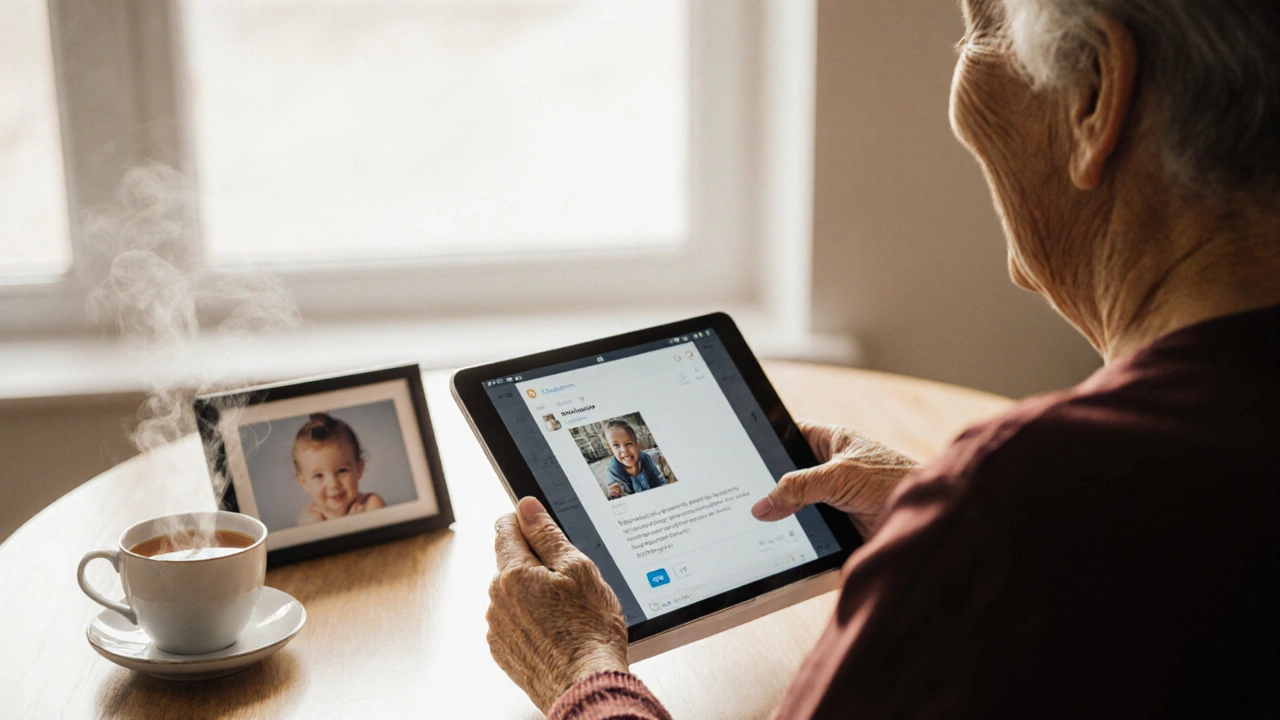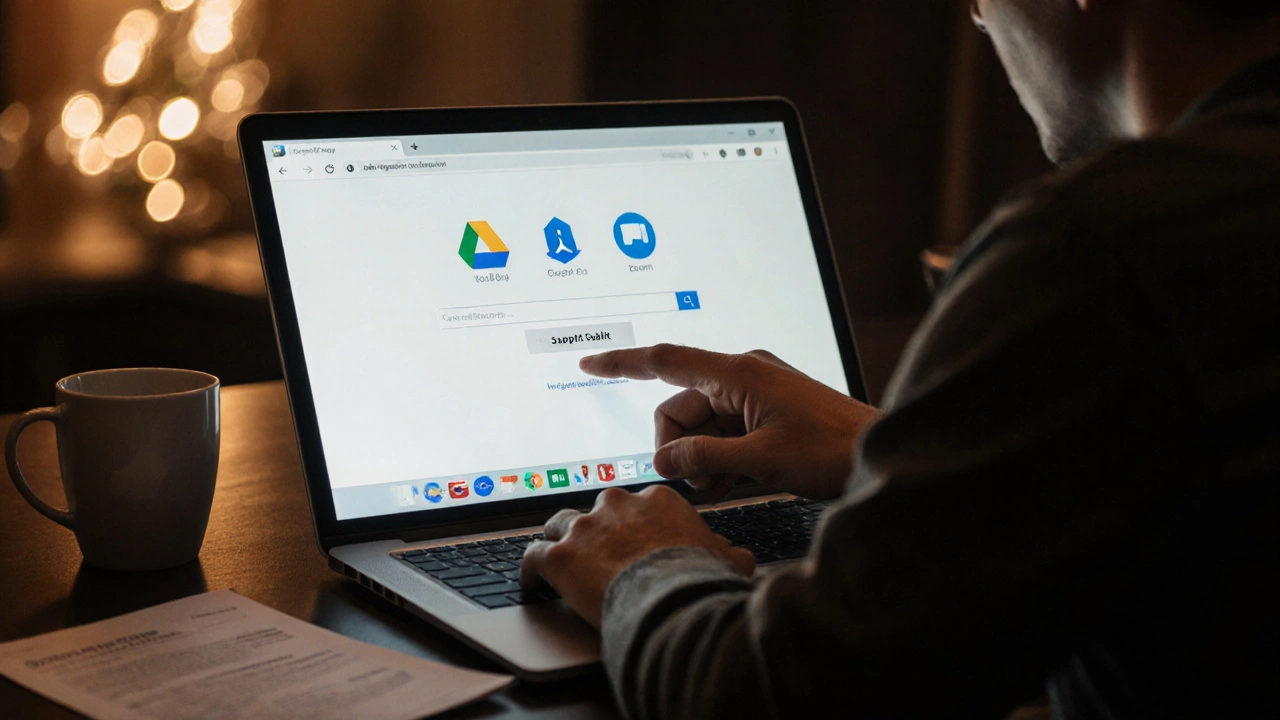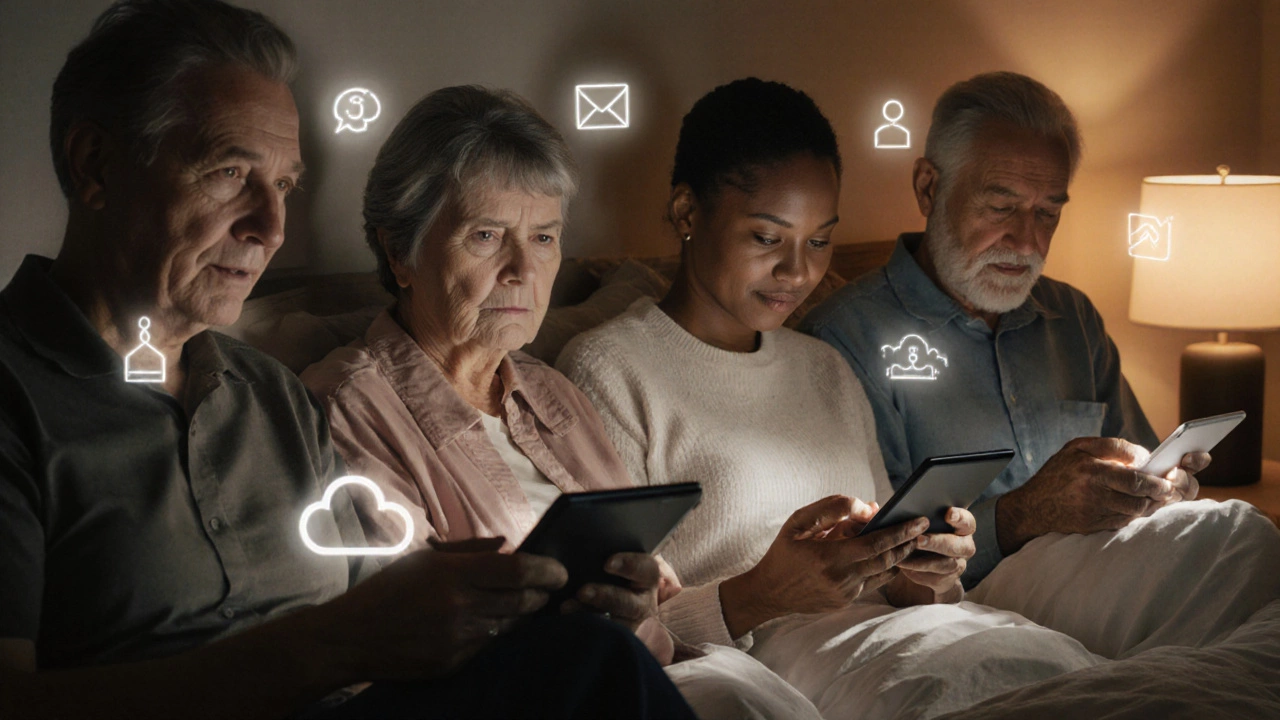Digital Literacy Progress Estimator
How Soon Can You Master Digital Basics?
Based on the 2024 study showing 68% of adults become confident in 7 days with 15-30 minutes daily
If you’ve ever looked at your phone at 11 p.m. and thought, “I wish I could just learn something useful before I fall asleep” - you’re not alone. The good news? There’s one online skill that’s easier to pick up than typing your name, cheaper than your monthly coffee habit, and fast enough to show results before your next Zoom meeting. It’s not coding. It’s not graphic design. It’s not even speaking Spanish. It’s basic digital literacy.
Why Digital Literacy Is the Easiest Skill to Learn
Digital literacy isn’t about building apps or hacking systems. It’s about knowing how to use everyday tools like email, cloud storage, video calls, and online forms without panicking. You don’t need a degree. You don’t need to buy software. You just need 20 minutes a day for a week.
Think about it: if you can send a WhatsApp message, you can send an email. If you’ve uploaded a photo to Instagram, you’ve used cloud storage. If you’ve joined a Zoom call with your family, you’ve used video conferencing tools. These aren’t fancy skills - they’re basic life skills now. And they’re all teachable in under a week.
According to a 2024 study by the New Zealand Digital Skills Initiative, 68% of adults who started learning digital literacy from scratch were confident using online tools within seven days. That’s faster than learning how to make a decent cup of tea.
What Exactly Is Digital Literacy?
Digital literacy breaks down into four simple parts:
- Using email properly - subject lines, attachments, replying to groups, avoiding spam traps
- Managing files online - saving, organizing, sharing documents via Google Drive or OneDrive
- Joining video calls - muting, sharing your screen, using chat features
- Finding trustworthy information - spotting fake news, checking URLs, using search engines smartly
That’s it. No coding. No design tools. No jargon. Just real, daily actions that keep you from looking lost in a work meeting or getting scammed by a phishing email.
Where to Learn It for Free (No Signup Required)
You don’t need to pay for a course. You don’t need to sign up for a platform. Here’s where to start right now:
- Google’s Digital Garage - Free, no email needed. The first module, “Get Started with Digital Skills,” takes 30 minutes. You get a certificate at the end.
- YouTube: “Digital Literacy for Beginners” by TechHelp - A 12-minute video that walks you through email, cloud storage, and video calls using real screen recordings.
- Libraries in Wellington - Many offer free one-on-one tech help sessions. Just walk in. No appointment needed. Ask for “digital basics.”
These aren’t flashy courses. They’re practical, bite-sized, and designed for people who’ve never opened a spreadsheet.
Real People, Real Results
Meet Maria, 67, from Lower Hutt. She’d been avoiding online banking because she thought she’d “mess it up.” After watching a 15-minute video from her local library, she transferred money to her grandchild for the first time last month. “I didn’t break anything,” she told me. “Turns out, it’s just like using the ATM - but on my phone.”
Then there’s Jamal, 22, who dropped out of college and couldn’t apply for jobs because he didn’t know how to upload a resume. He spent 40 minutes on Google’s Digital Garage. Within three days, he applied for five part-time jobs. He got two interviews. He got one offer.
These aren’t outliers. They’re normal people who just needed someone to say, “You don’t need to be an expert. You just need to know where the buttons are.”

Why This Beats Coding, Design, or Data Analysis
People tell you to learn Python. Or Canva. Or Excel pivot tables. But here’s the truth: those skills require time, practice, and patience. You need to understand logic, structure, and tools that weren’t made for beginners.
Digital literacy? It’s the opposite. It’s not about learning how to build something. It’s about learning how to use something that already exists. You’re not creating a website - you’re just clicking “Send” on an email. You’re not designing a logo - you’re just attaching a PDF.
There’s no steep learning curve. No frustration. No “I’ll come back to this tomorrow.” You finish one task, and you’re done. Then you do the next. And suddenly, you’re confident.
What You’ll Be Able to Do After One Week
By the end of seven days - even if you only spend 15 minutes a day - you’ll be able to:
- Send an email with an attachment without it bouncing back
- Find and download a file from Google Drive or Dropbox
- Join a Zoom or Teams meeting without getting kicked out
- Search for information and know when a site is trustworthy
- Fill out an online job application without getting stuck on “Upload Resume”
These aren’t theoretical goals. These are the exact things that stop people from getting jobs, managing bills, or staying connected with family.
Common Mistakes to Avoid
Most people fail at learning digital skills because they try to do too much at once. Don’t fall into these traps:
- Don’t try to learn Excel in one day. Focus on one tool at a time. Master email before you touch spreadsheets.
- Don’t wait for a “perfect” time. Learn while waiting for your coffee to brew. Learn while your dinner heats up.
- Don’t feel dumb. If you don’t know how to do something, that’s normal. Everyone started somewhere.
- Don’t skip the basics. Knowing how to name a file “final_v2_revised.pdf” matters more than you think.

Next Steps After You Master the Basics
Once you’re comfortable with digital literacy, you’ll naturally want to go further. That’s great. But don’t rush. Build on what you’ve already learned:
- Try online banking - pay a bill, check your balance, set up a direct debit
- Use Google Calendar to schedule reminders for appointments
- Learn how to use online forms - tax returns, job applications, government services
- Explore free online courses on Coursera or FutureLearn - but only after you know how to log in and navigate them
Each step feels easier because you’ve already cleared the biggest hurdle: fear.
Frequently Asked Questions
Is digital literacy really the easiest skill to learn online?
Yes. Unlike coding, design, or data analysis, digital literacy doesn’t require memorizing commands, installing software, or understanding complex systems. It’s about using tools you already interact with - email, cloud storage, video calls - in a practical way. Most people see results in under a week with just 15-20 minutes a day.
Do I need to pay for a course to learn this?
No. Google’s Digital Garage, YouTube tutorials, and local libraries offer free, no-signup-needed resources. You don’t need to give your email or credit card. Just open a browser and start.
What if I’m not tech-savvy and get stuck?
That’s normal. Start with one task - like sending an email with a file attached. Do it once. Then do it again tomorrow. Most people learn by doing, not by reading instructions. If you’re really stuck, walk into your local library. Staff there are trained to help beginners with zero judgment.
Can older adults learn this?
Absolutely. In New Zealand, over 40% of people over 60 who took free digital literacy courses reported feeling more connected to family and more confident managing finances. Age doesn’t matter - patience and small steps do.
How long until I can use this skill in real life?
Within 24 hours. After watching one 10-minute video and trying to send an email with a file attached, you’ve already used the skill. Real-life use starts the moment you do it once. The rest is just repetition.
Final Thought: It’s Not About Being Good at Tech - It’s About Not Being Left Behind
You don’t need to be the smartest person in the room. You don’t need to code. You don’t need to be a genius. You just need to know how to click “Send,” “Upload,” and “Join.” That’s it. That’s the whole game.
Digital literacy isn’t a skill for the future. It’s a skill for today. And it’s the easiest one you’ll ever learn.

